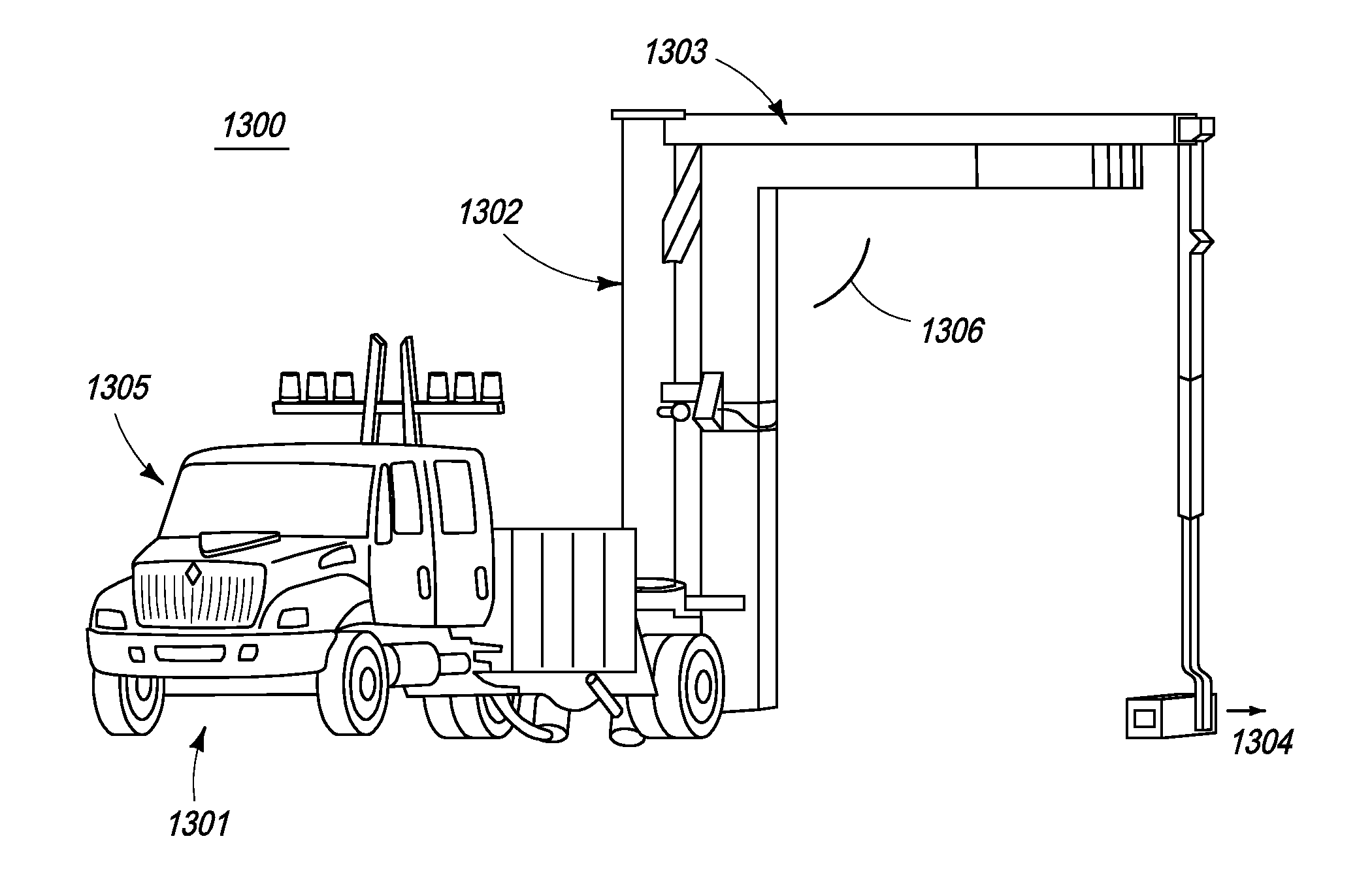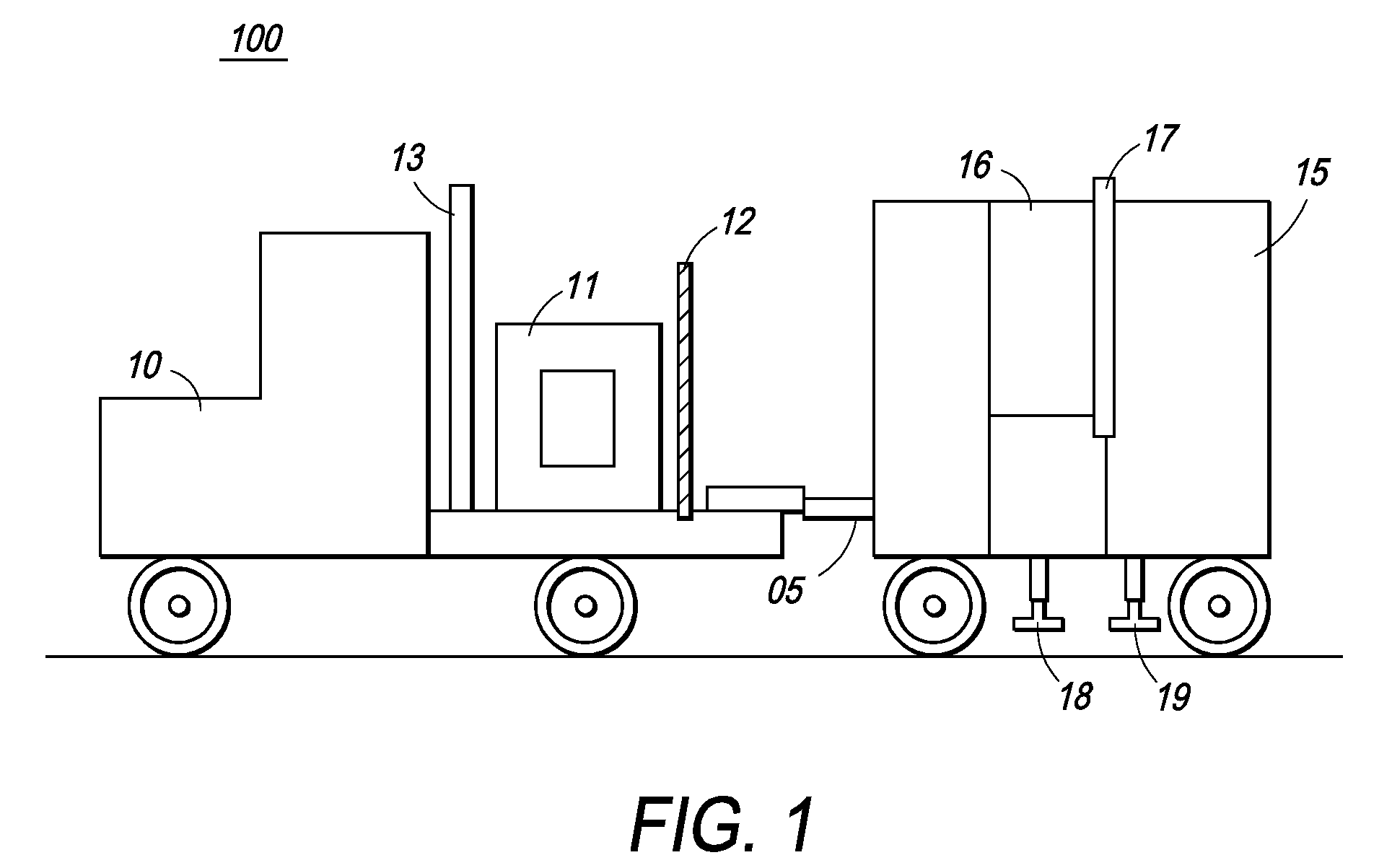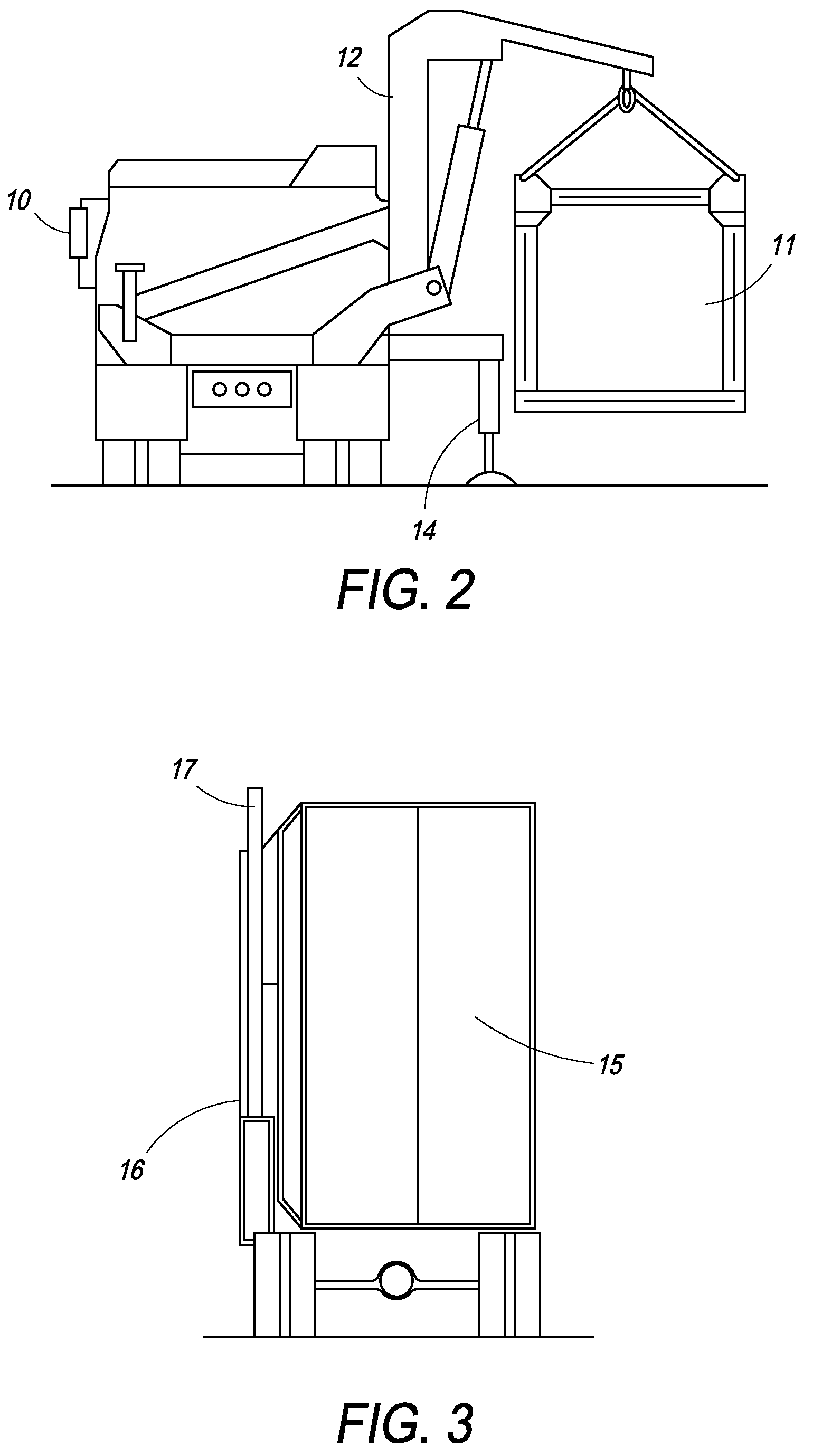Cargo scanning system
a scanning system and cargo technology, applied in the direction of material analysis, material analysis using wave/particle radiation, instruments, etc., can solve the problems of inability to easily modify, space is generally in substantial demand and short supply, and the scenario is not typically feasible, etc., to achieve cost-effective and accurate deployment, rapid and accurate on uneven surfaces
- Summary
- Abstract
- Description
- Claims
- Application Information
AI Technical Summary
Benefits of technology
Problems solved by technology
Method used
Image
Examples
first embodiment
[0081]In a first embodiment, FIG. 1 shows a perspective view of an exemplary self-contained inspection system 100. The system 100 comprises of an inspection module 15 that, in a preferred embodiment, is in the form of a mobile trailer capable of being towed and transported to its intended operating site with the help of a tug-vehicle 10. While the present invention is depicted as a tug vehicle 10 connected to a trailer 15, one of ordinary skill in the art would appreciate that the vehicular portion of the system and inspection module portion of the system could be integrated into a single mobile structure. The preferred embodiment uses a tug vehicle independent from the inspection module because, as discussed later, it adds greater flexibility in how the system is used. In another embodiment, the operator trailer, unit 15, could be a separate vehicle by itself.
[0082]The tug-vehicle 10 can serve as a support and carrier structure for at least one source of electromagnetic radiation 1...
second embodiment
[0144]In a second embodiment, the present invention is directed towards a relocatable cargo inspection system that employs a single boom attached to a truck that is capable of receiving and deploying the boom. The boom comprises a plurality of radiation detectors and a source. The boom is preferably installed in the rear of the truck to minimize radiation dosage to the driver and is capable of being folded into the truck and folded out, thus forming an inverted “L” on either the driver or passenger side.
[0145]The single boom structure permits the source, positioned at the base of the connecting structure, to rigidly align with the detector array, also permitting the unit to operate with a narrower beam width and a lower radiation level. In addition, the position of the source at the base of the connecting structure enables a larger field of view relative to conventional systems having the source on the vehicle. The source preferably extends to a height as low as six inches off the g...
PUM
| Property | Measurement | Unit |
|---|---|---|
| angle | aaaaa | aaaaa |
| angle | aaaaa | aaaaa |
| optimal offset distance | aaaaa | aaaaa |
Abstract
Description
Claims
Application Information
 Login to View More
Login to View More - R&D
- Intellectual Property
- Life Sciences
- Materials
- Tech Scout
- Unparalleled Data Quality
- Higher Quality Content
- 60% Fewer Hallucinations
Browse by: Latest US Patents, China's latest patents, Technical Efficacy Thesaurus, Application Domain, Technology Topic, Popular Technical Reports.
© 2025 PatSnap. All rights reserved.Legal|Privacy policy|Modern Slavery Act Transparency Statement|Sitemap|About US| Contact US: help@patsnap.com



